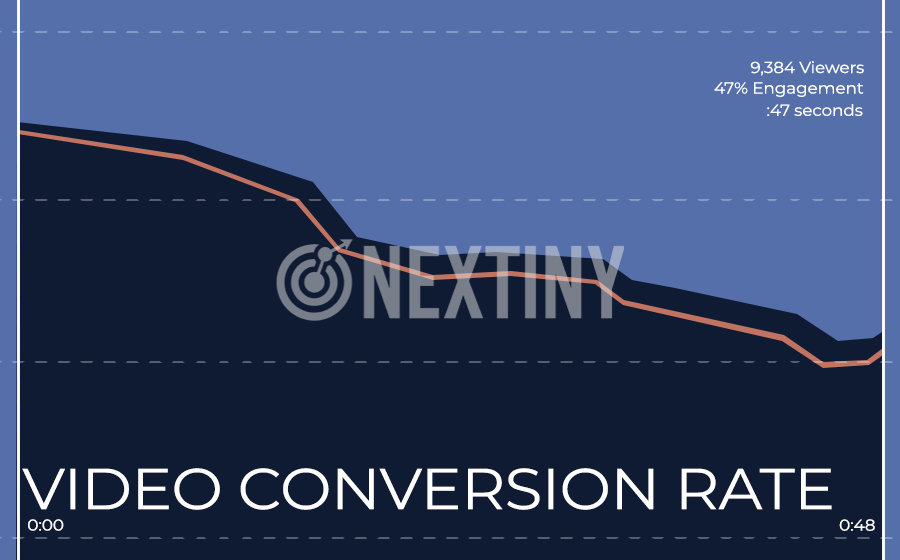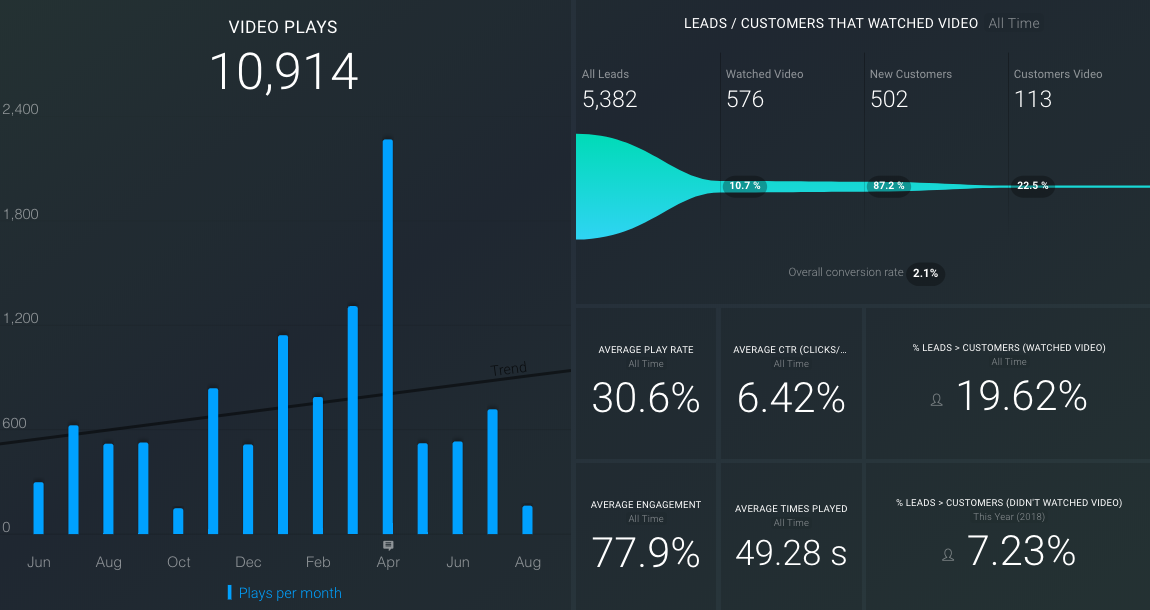
Video is inevitable. It’s becoming easier to use and its effectiveness is undeniable and now we’ve got the stats to back that up because it’s something we’re all in with. Video Marketing, and its immense selection of data metrics, comes with the responsibility to track them and learn from them. Don’t squash the potential of your videos, nurture it by tracking metrics and building off of them.
Related Case Study: HubSpot Ecosystem: Increased Conversions with Video and Conversational Marketing
Each metric answers a question and provides an answer built by your audience and their tendencies. Narrow down which metric you need by asking yourself the right question.
Is that question: How do you track the percentage of visitors who are converting to leads and then customers? If so, you’re looking for Conversion Rates.
What is Video Conversion Rate?
Conversion Rate takes your conversions and divides it by the total amount of visitors. Leaving you with a number which represents the percentage of people who have converted from your total viewers.
For example, if your conversion rate is 5% then 5% of the people who have viewed your video have converted from it.
What’s so important about tracking a metric like this?
Conversion rate is a metric that can directly measure the effectiveness of a video in doing what it was made to do: convert visitors into leads. Not only that, but it can measure the effectiveness of an entire page where the video lives and measure if the video is helping or hurting that page’s effectiveness, also.
This metric is incredibly important to track because it’s one of the few ways to measure the success of A/B testing (the process of testing the use of different methods) since it measures something so crucial. You can have an incredible engagement rate or play rate but if nobody is converting then what’s the point?
Like other metrics, the data will tell you a story but it’s your job to interpret it and learn from it.
How do we track conversion rate on videos?
Using Databox, we’re able to see exactly how many visitors came to the site, how many of those visitors viewed the video (Play Rate as seen in a previous Databox Datasnack), and how many of those visitors turned into leads.
Databox lets us see all this on one page which allows us to see the whole story. This way we can see how effective the video is at improving conversion rates and turning visitors into leads and customers.
On videos, we can track how our converting efforts (annotations, forms, etc.) are working, which ones are more effective and on which videos, and if we should be doing more or less on each one.
How to Improve your conversion rate?
Improving conversion rate is an overarching goal of almost everybody and not something with a magic solution but there are certain things you can do that will help:
1. A/B testing: Try new things and see what works best to fine-tune your videos, content, and strategy. There are a number of changes that you could make to your videos to help improve your conversion rate, but A/B Testing is all about testing one variation at a time, making the iterations that worked better, and moving on to the next thing to test. Wistia allows you to test variations all within one embed code. This saves you time and helps you make impactful changes more quickly.
2. Forms: Attach forms on videos to catch an interested party early by having them fill out additional information to continue the video. These can also be used at the end of videos if your data says it’s necessary.
3. Annotations: Lead your visitor to more information and guide them along your conversion path. These can be small buttons that pop-up during certain times in a video that leads to more videos, blogs, landing pages, and more. Video can be a great way to build anticipation before moving someone to the next step in the process. Annotations allow you to encourage that step when the engagement is at its highest.
4. Pop-ups, chatbots, etc.: Things on web pages that appear and provide a call-to-action to the visitor by grabbing their attention. They’re also excellent ways to inform and communicate with a visitor.
Metrics like conversion rate are just ways to measure what your visitors and audience are telling you through their actions and tendencies. Being able to put this valuable information into numbers and combining them onto a Databox board makes learning and improving your content easier than ever.
